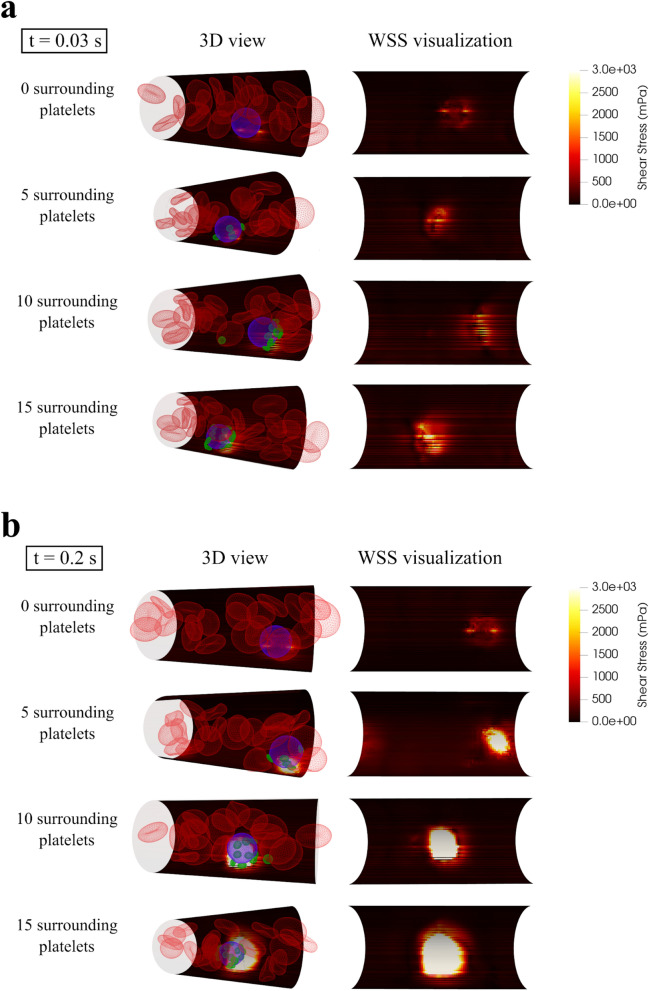Figure 4.
The wall shear stress (WSS) during rolling state and firm adhesion of the CTC. (a) Illustration of WSS on the microvessel wall as a result of rolling motion of CTCs and the attached platelets near the vessel wall at t = 0.03. The area of elevated shear stress expands when more platelets are attached to the CTC. High shear stress on the endothelial cells initiates the adhesion molecules that is a necessary step before firm adhesion occurs; (b) Illustration of the WSS on the microvessel wall for different numbers of platelets attached to the CTC at t = 0.20. When there is no platelet attached to the CTC, the CTC continues its rolling motion and the WSS is almost the same as the one at t = 0.03 (a). When there are platelets attached to the CTC, the firm adhesion occurs and the WSS substantially increases in comparison with rolling motion (a) and reaches to its maximum magnitude. Additionally, the area of the elevated WSS expands increasingly by increasing the number of attached platelets.

